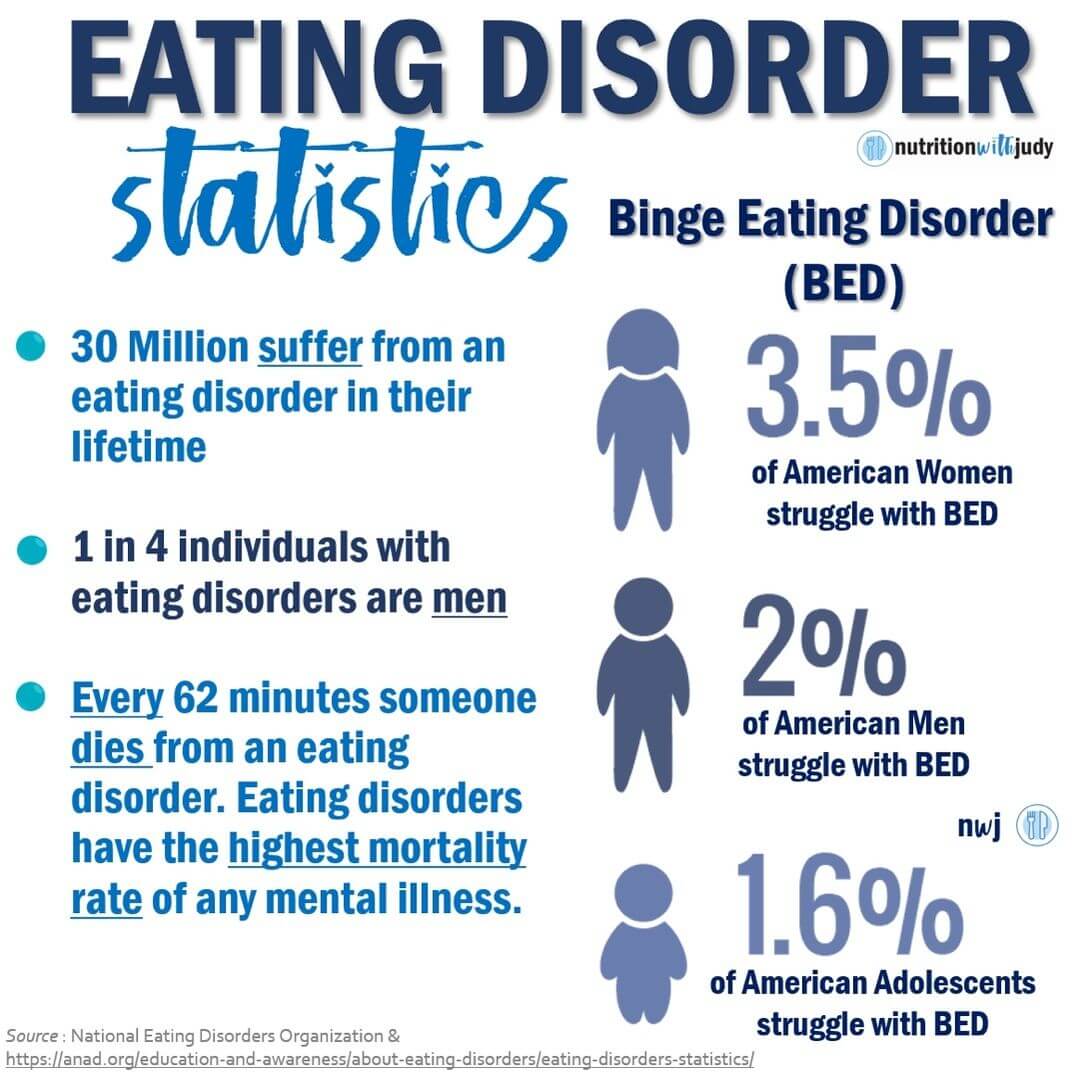

Microblog: Eating Disorder Statistics – Binge Eating Disorder


Many people think eating disorders are a female-thing. But it’s not. It can happen to anyone. Overtime, people with eating disorders lose the ability to see themselves objectively and their unhealthy relationship to food dominates their entire life.
🤕Eating disorders can be genetic or caused by psychological issues (as we’ve seen in the Minnesota Starvation Study) like coping skills, control issues, trauma, family trouble or social issues.⠀
Here are some facts on Eating Disorders:⠀
1️⃣30 million suffer from an eating disorder in their lifetime⠀
2️⃣1 in 4 individuals with eating disorders are men⠀
3️⃣4 out of 10 Americans have either suffered or knows someone who has suffered from an eating disorder⠀
4️⃣Every 62 minutes someone dies from an eating disorder. Eating disorders have the highest mortality rate of any mental illness.⠀
5️⃣64% of individuals with bulimia (binge/purge—some type of compensatory behavior for bingeing) have a near-normal body weight⠀
6️⃣Only 1 out of 10 people with eating disorders receive treatment⠀
7️⃣50% of women use unhealthy behaviors to control their weight⠀
8️⃣37% of men who binge experience depression⠀
9️⃣43% of men are dissatisfied with their bodies⠀
🔟70% of 18-30 years olds don’t like their body.⠀
🤢Binge Eating Disorder⠀
BED is now an actual eating disorder diagnosis in the DSM-5 which was released by the American Psychiatric Association in May 2013. DSM stands for Diagnostic and Statistical Manual of Mental Disorders. This is the official “rule-book” of mental health diagnosis and is important so that everybody is using a common language when talking about a specific disorder. In the past 20 years there have been over 1,000 research papers published that support the idea that BED is a specific diagnosis that has validity and consistency.⠀
1️⃣Binge Eating Disorder (BED) is the most common disorder in the US⠀
2️⃣2.8 million people struggle with BED and recognized recently as a formal diagnosis (2013).⠀
3️⃣3.5% of women, 2% of men, 1.6% of adolescents struggle with BED.⠀
❓Why am I sharing these stats?⠀
Because if you’re struggling at all, know that you aren’t alone. But also know that you need support. It’s critical.



